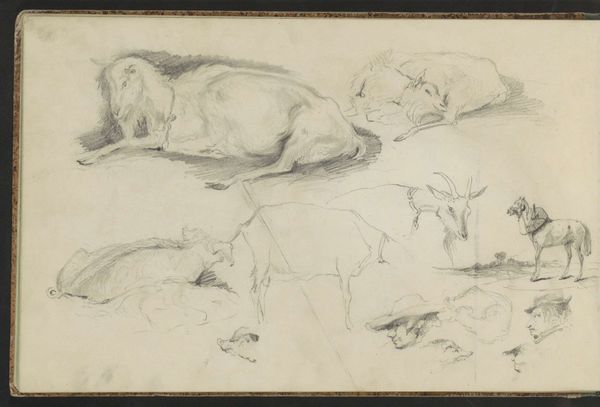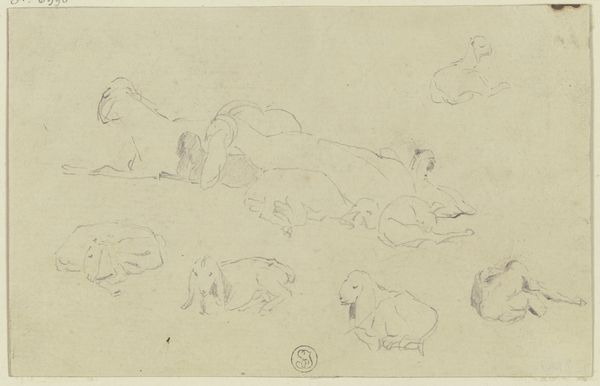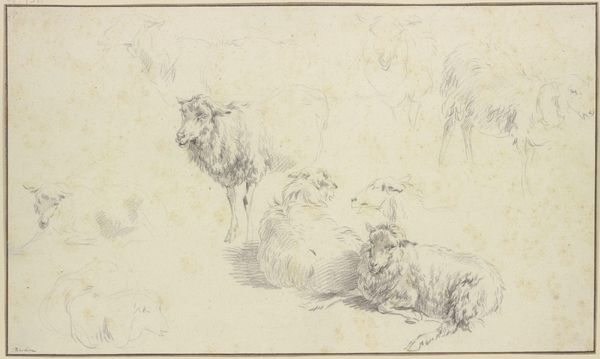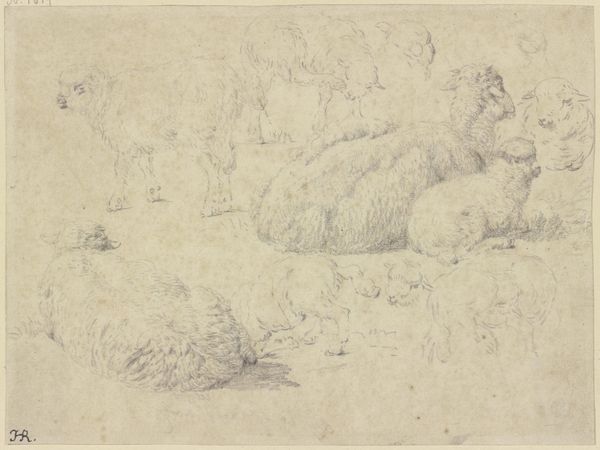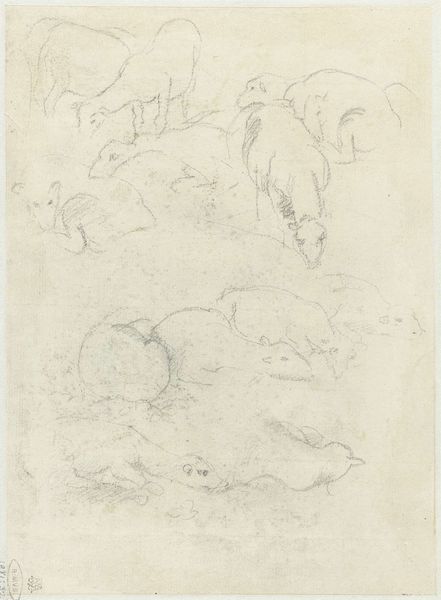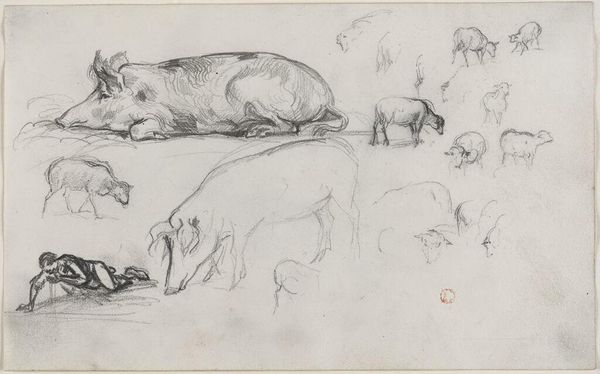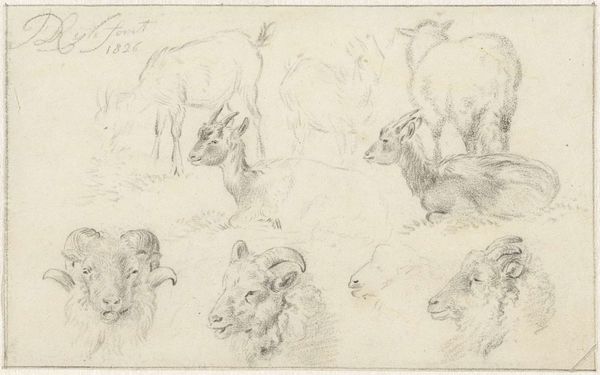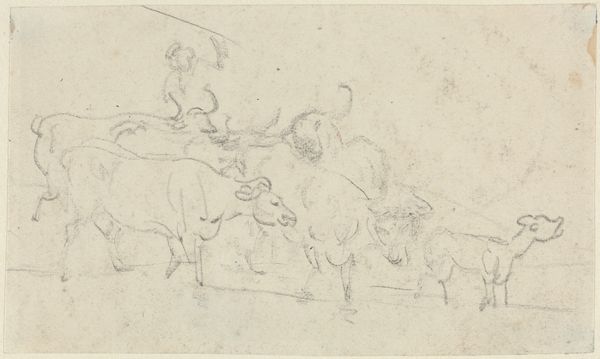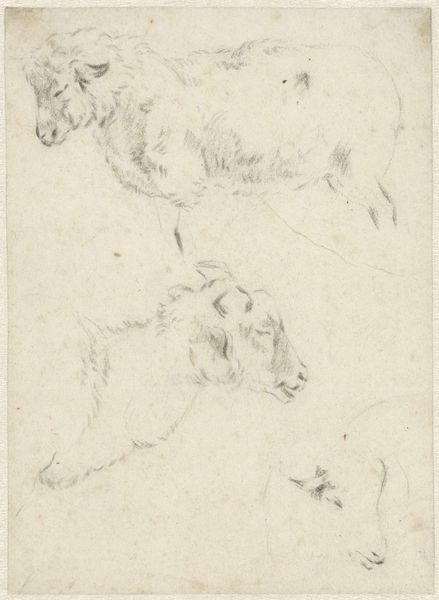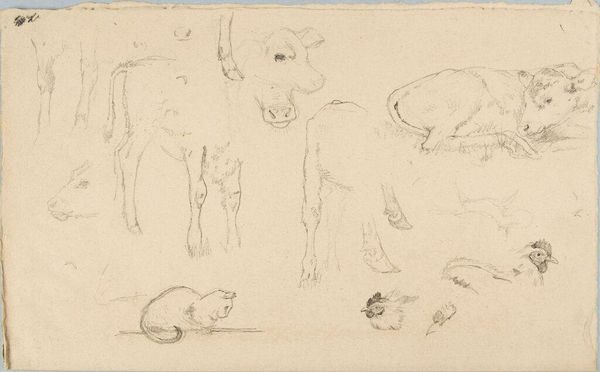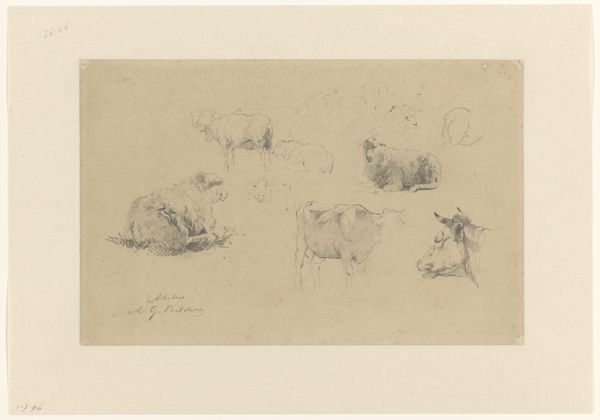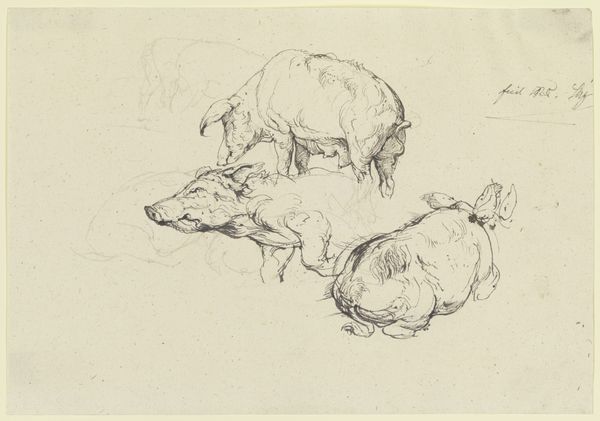
drawing, paper, pencil
#
pencil drawn
#
drawing
#
amateur sketch
#
toned paper
#
light pencil work
#
animal
#
pencil sketch
#
incomplete sketchy
#
landscape
#
figuration
#
paper
#
personal sketchbook
#
pencil
#
sketchbook drawing
#
pencil work
#
sketchbook art
#
realism
Dimensions: height 240 mm, width 307 mm
Copyright: Rijks Museum: Open Domain
Curator: This is "Studies van koeien en een paard," dating from between 1833 and 1907, by Hendrik Savrij, now residing at the Rijksmuseum. Editor: Well, it certainly has the casual air of a sketchbook page. The pencil strokes are light and the animals seem caught in mid-pose, exuding a quiet rural atmosphere. Curator: Indeed, it's intriguing how the sketch presents working animals. The emphasis isn't on romanticizing them but rather capturing them through light pencil work, perhaps as studies for a larger painting. Editor: I’m struck by the presence of the recumbent cow as an enduring symbol of peace, of nature’s abundance and connection to pastoral life. You find the motif in early Renaissance paintings all the way through Dutch masters like Potter and Cuyp. Do you think there is a kind of knowing self-reference going on here? Curator: It’s all rendered with an economy of means, wouldn't you agree? Notice the artist’s choice of toned paper that serves as an ambient backdrop and lends itself to suggesting soft shading. It's about observing and quickly recording. Perhaps these cattle represent economic power on the hoof and the burgeoning modernization that changed Dutch society forever. The animals' bodies have a weight and mass. They are presented almost as anonymous parts within the broader framework of agriculture and animal husbandry. Editor: True. Though consider, too, how the horse subtly deviates. Whereas the cattle seem settled into the scenery and purpose of this piece, the placement feels almost reverential. The overall compositional and tonal sensitivity leads me to believe that this Savrij sought some connection with nature. The sketchbook functions as a deeply personal, intimate space to engage in a form of conversation with the animals. Curator: I hadn't considered the composition from such an angle, although your suggestion concerning intimacy reminds me that while this is in the tradition of realist drawing, there's also a quiet social document aspect at play too. Thanks for expanding the context in which to appreciate these working animals. Editor: And thank you, in turn, for tracing how something as intimate as a sketchbook practice might nonetheless point toward shifting relationships to our mode of making.
Comments
No comments
Be the first to comment and join the conversation on the ultimate creative platform.
